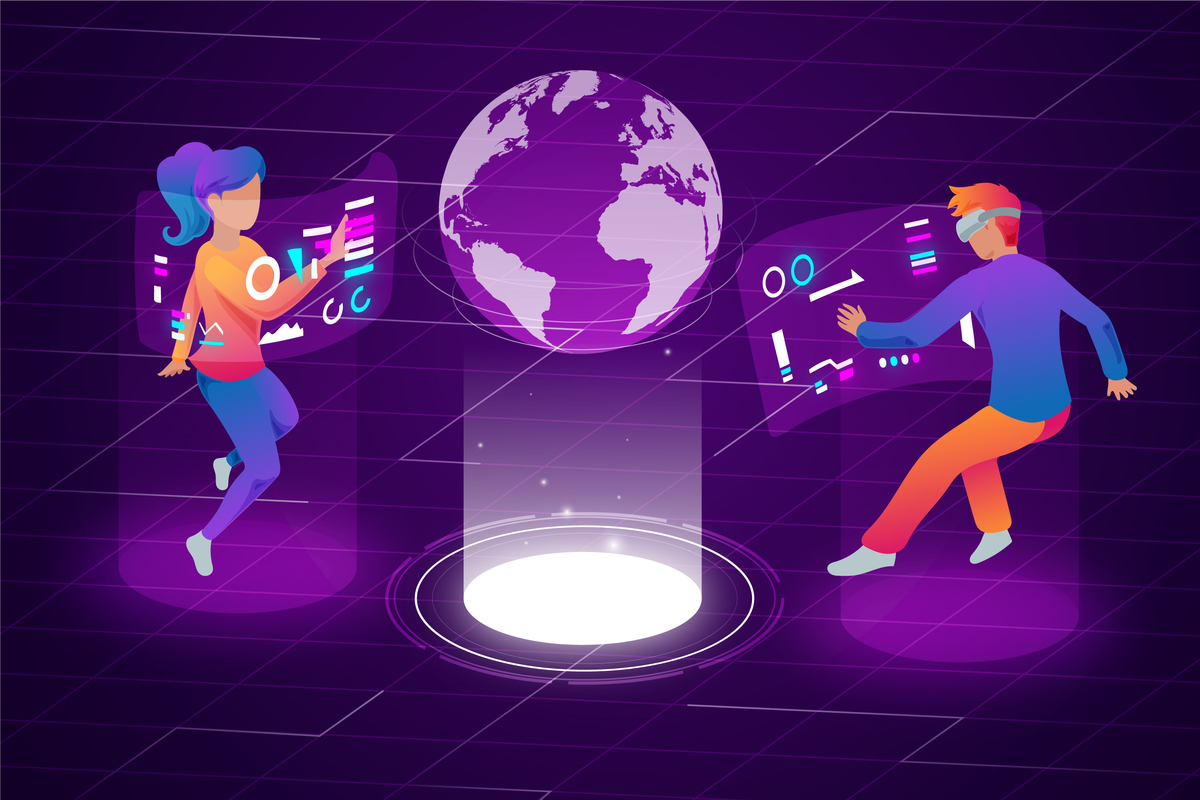Since it began, the internet has come a long way. It has undergone different stages marked by big technological changes and how people use it. These stages, usually called Web 1.0, Web 2.0, and the new Web 3.0, have completely changed how we get information, talk to each other, and use the Internet. The current web3 market cap is a whopping $27.5 billion.
In this blog, we'll examine how the internet has changed over time, what makes each change special, and what the web might be like in the future, starting with Web 3.0, Web 4.0, and more.
See also: SoftBank Vision Fund 2 invest $120 million in Adverity
Web 1.0: The Static Web (Early to Mid-1990s)
Web 1.0 means the old days of the Internet when things were simple and there wasn't a lot of interaction. At that time, web pages were flat, HTML was basic, and the main aim was to share information.
- Static Websites: Websites during Web 1.0 were predominantly static, offering text-based content and simple graphics. There was little to no user interaction or dynamic content generation.
- Limited Interactivity: Users could only consume information from web pages; there was minimal interaction with the content or other users.
- Top-Down Content Delivery: Content was primarily created and controlled by a select few, such as businesses and organizations. Users were passive consumers of information.
- Slow Connection Speeds: Dial-up internet connections were common during this era, leading to slow loading times for web pages.
- E-commerce Emergence: Web 1.0 saw the birth of e-commerce, with companies like Amazon and eBay paving the way for online shopping.
Web 2.0: The Interactive Web (Early 2000s to Present)
Switching to Web 2.0 was a significant change in how the Internet operates. It brought dynamic, user-generated content, social networking, and improved interaction.
- User-Generated Content: Web 2.0 empowered users to create and share content, leading to blogs, forums, and social media platforms. Websites like Blogger, Wikipedia, and YouTube became prominent.
- Social Networking: The emergence of platforms like Facebook, LinkedIn, and Twitter transformed how people connected and communicated online, fostering global communities.
- Interactivity and Collaboration: Web 2.0 introduced interactive web applications, including webmail, online collaboration tools, and cloud-based services. Google Docs and Dropbox are prime examples.
- Rich Multimedia: The web became more multimedia-centric, integrating images, videos, and interactive elements into websites and applications.
- Mobile Revolution: The proliferation of smartphones and mobile internet access extended the reach of the web, making it accessible anytime, anywhere.
- Data-Driven Personalization: Web 2.0 leveraged user data to deliver personalized experiences, from tailored e-commerce site recommendations to social media content suggestions.
Web 3.0: The Semantic Web (Emerging)
So, what is Web 3.0? The next stage of the internet, often called Web 3.0, marks a big change in how we use and understand digital information. It's all about semantic web tech, AI, blockchain, and more decentralization.
- Semantic Web: Web 3.0 aims to make the web more intelligent and context-aware. It involves using semantic technologies to understand data meaning and create connections between information.
- Artificial Intelligence: AI and machine learning play a central role in Web 3.0, enabling smarter search engines, chatbots, virtual assistants, and personalized content recommendations.
- Decentralization: Blockchain technology and decentralized applications (DApps) offer greater control and security over data, enabling users to manage their digital identities and assets more effectively.
- Enhanced Interoperability: Web 3.0 seeks to overcome the siloed nature of Web 2.0 platforms by promoting interoperability between different services and applications.
- Extended Reality (XR): Web 3.0 embraces XR technologies, such as augmented reality (AR) and virtual reality (VR), to create immersive and interactive online experiences.
- Personal Data Ownership: Users are given more control over their data, deciding how and when it is shared while maintaining privacy and security.
Web 4.0 and Beyond: The Metaverse and Beyond
We might head towards Web 4.0 and beyond as the internet keeps growing. People are getting intrigued by the metaverse concept, a virtual world where folks can connect and explore digital realms in real time.
- The Metaverse: The metaverse represents a convergence of physical and digital realities, offering limitless possibilities for social interaction, commerce, education, and entertainment. Companies like Facebook (now Meta) are actively investing in its development.
- Immersive Experiences: Web 4.0 may offer even more immersive experiences, blurring the lines between the physical and digital worlds through advanced AR, VR, and mixed reality technologies.
- AI Advancements: AI will continue to advance, potentially leading to more human-like virtual assistants and highly sophisticated AI-driven content generation.
- Quantum Computing: The development of quantum computing could revolutionize data processing and encryption, opening up new possibilities and challenges for the web.
- Ethical Considerations: As the internet evolves, ethical considerations surrounding data privacy, security, and digital rights will become increasingly important.
- Collaboration and Connectivity: Collaboration between individuals, businesses, and governments will be crucial to shaping the future of the Internet and ensuring it serves humanity's best interests.
Conclusion
The growth of the Internet from Web 1.0 to Web 3.0 and beyond showcases the creativity of people and our improving ability to utilize technology for sharing knowledge, communication, and collaboration. As a vital aspect of our daily lives, the Internet has transformed businesses, markets, and communities. With Web 3.0 already here and Web 4.0 alongside the metaverse on the horizon, it's essential to prioritize ethics, inclusivity, and user freedom as we advance. The future of the internet is incredibly promising, offering numerous opportunities for creativity, connection, and progress.
Featured image: Image by freepik
Subscribe to Whitepapers.online to learn about new updates and changes made by tech giants that affect health, marketing, business, and other fields. Also, if you like our content, please share on social media platforms like Facebook, WhatsApp, Twitter, and more.

